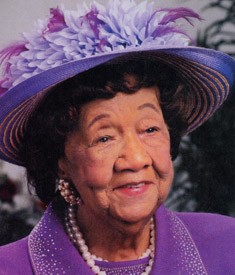Publication No. 22
Creative Work/A Series of Articles Published by the Women’s Media Center
Author(s): Lamb, Yanick Rice
Impact
The Women’s Media Center periodically invites me to write articles about new research and/or the contributions of various women. These articles also help to highlight African-American women before an international audience from diverse backgrounds. This collection includes three representative samples. (Two others have been included as separate publications.)
- “Oprah Winfrey and the Immortal Reach of Henrietta Lacks” http://www.womensmediacenter.com/feature/entry/oprah-winfrey-and-the-immortal-reach-of-henrietta-lacks, April 25, 2017
- “Dorothy Height: A Woman Who Wore Many Hats”http://www.womensmediacenter.com/feature/entry/dorothy-height-a-woman-who-wore-many-hats, Feb. 22, 2017
- “Gwen Ifill’s Profound Impact on African-American Women” http://www.womensmediacenter.com/feature/entry/gwen-ifills-profound-impact-on-african-american-women-journalists, Dec. 4, 2016
Pegged to the HBO film, my article on “Oprah Winfrey and the Immortal Reach of Henrietta Lacks” explains how Lacks’ HeLa cells have lived on as a medical gift that keeps on giving — without her knowledge or consent. The endless supply of HeLa cells allowed scientists to perform experiments that they couldn’t conduct on humans. The cells revolutionized science, contributing to advances in cloning, in vitro fertilization, chemotherapy, and treatments for Parkinson’s disease, AIDS, herpes, influenza, and polio. They even traveled into space on one of the first missions and yielded five Nobel Prizes for related research. No other human cells have ever been as viable in lab settings.
For a half-century, Henrietta Lacks’ family was unaware that her cells had lived on, contributing so much to so many. The revelation in a scientific journal in 1971 and Johns Hopkins’ subsequent requests for their own blood samples evoked feelings of suspicion, confusion, and being disrespected.
“Dorothy Height: A Woman Who Wore Many Hats” coincided with the release of a new stamp in honor of a respected leader who also influenced several presidents. Dorothy Irene Height blended substance with style as she tackled gender and racial issues. You never saw Height without a hat. She had lots of them: Blue hats. Green hats. A high-topped cranberry hat with roses. A white-sequined halo. Fuchsia spirals trimmed in black. Some of her nearly 300 hats are now at the Smithsonian.
Little kids knew Height as the hat lady. Grown folks knew not to let the hats fool them. For under those hats was a woman of intellect with a mind that stayed sharp until the day she died at age 98 in 2010. The world celebrated her life with three days of tribute — a ceremony by Delta Sigma Theta, Inc. at Howard University, where her sorority was founded; a public viewing at the headquarters of her beloved National Council of Negro Women, where she had served as president for four decades; and a funeral at Washington National Cathedral, filled with mourners wearing all sorts of hats in her honor.

From left: Journalists Donna Britt, Mireille Grangenois, Sonya Ross, Michele Norris, Gwen Ifill, Lynne Adrine and Marilyn Milloy at the National Press Club to celebrate Ifill receiving the Fourth Estate Award. (Photo courtesy of Sonya Ross)
“Gwen Ifill’s Profound Impact on African-American Women” explained how and why the respected journalist made a difference. People around the world were stunned by reports of the 61-year-old Ifill’s death from cancer — two days before she was to receive the 2016 John Chancellor Award for Excellence in Journalism at Columbia University. Everyone from President Obama to people on the street praised the way in which she protected “the public’s right to know” throughout her career, most recently as moderator and managing editor of Washington Week as well as co-anchor and managing editor of PBS NewsHour.
However, her loss is especially profound for African-American journalists, especially women. The pool of black journalists covering national politics is small, and it’s even tinier for coveted beats like the White House and presidential campaigns, of which Ifill covered seven. She was a role model and mentor who pulled others along as she broke through glass ceilings. She let others know — including students during her visits to Howard University — that they deserved the same roles or whatever they envisioned in their dreams.
This collection meets criteria No. 10 set forth on page 10 in Appendix A of Recommendation 305-2015 as an Exemplary Creative/Professional Activity:
Criteria No. 10. Authorship of works such as articles, reviews, commentaries, multimedia, and/or other creative projects published or broadcast locally, nationally or internationally in newspapers, magazines, popular or industry-specific media (e.g., PR Tactics, JAE, Folio, AJR, CJR etc.) or on the Internet if they demonstrate high standards in the practice of the discipline. This can include:
- A collection of short reported pieces about a single subject or a substantive collection on diverse subjects.


Recent Comments